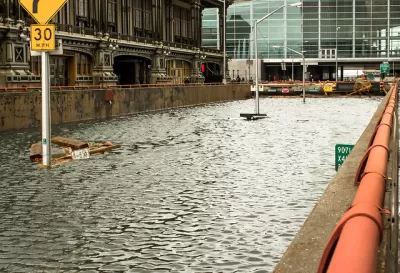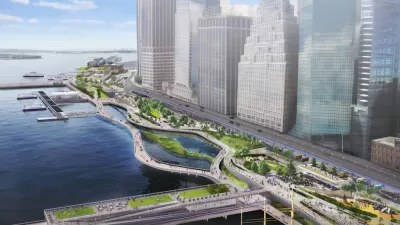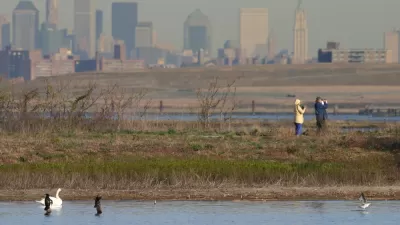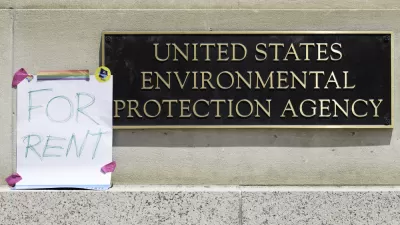The U.S. Army Corps of Engineers was on the verge of proposing a plan to protect New York City from storm surges and sea-level rise. Instead, the city of New York has lost federal support for a path toward climate resilience.

"The federal government has abruptly halted a study of New York City's coastal storm surge preparedness, " reports Jake Offenhartz, "throwing into question the fate of the region's most expansive climate resiliency effort and fueling speculation about politically motivated retribution by the Trump administration."
"The study was launched in 2017 by the U.S. Army Corps of Engineers to evaluate five possible defenses against severe storms and flooding that threaten coastal communities and the New York/New Jersey harbor," according to Offenhartz. After the study was shelved quietly last week, Army Corps officials blamed the decision on a "funding lapse."
Robert Freudenberg, vice president for energy and environment at the Regional Plan Association, is quoted in the article saying the decision is dangerous and unprecedented. Freudenberg also suggests in the article that the decision is motivated by politics. President Trump Tweeted on the subject of the $119 billion stormwall under consideration to protect the city, saying the barrier looks terrible and is "foolish."
A massive 200 Billion Dollar Sea Wall, built around New York to protect it from rare storms, is a costly, foolish & environmentally unfriendly idea that, when needed, probably won’t work anyway. It will also look terrible. Sorry, you’ll just have to get your mops & buckets ready!
— Donald J. Trump (@realDonaldTrump) January 18, 2020
FULL STORY: "Unprecedented and Dangerous": Trump Administration Halts NYC's Most Important Climate Resiliency Study

Study: Maui’s Plan to Convert Vacation Rentals to Long-Term Housing Could Cause Nearly $1 Billion Economic Loss
The plan would reduce visitor accommodation by 25,% resulting in 1,900 jobs lost.

North Texas Transit Leaders Tout Benefits of TOD for Growing Region
At a summit focused on transit-oriented development, policymakers discussed how North Texas’ expanded light rail system can serve as a tool for economic growth.

Why Should We Subsidize Public Transportation?
Many public transit agencies face financial stress due to rising costs, declining fare revenue, and declining subsidies. Transit advocates must provide a strong business case for increasing public transit funding.

How to Make US Trains Faster
Changes to boarding platforms and a switch to electric trains could improve U.S. passenger rail service without the added cost of high-speed rail.

Columbia’s Revitalized ‘Loop’ Is a Hub for Local Entrepreneurs
A focus on small businesses is helping a commercial corridor in Columbia, Missouri thrive.

Invasive Insect Threatens Minnesota’s Ash Forests
The Emerald Ash Borer is a rapidly spreading invasive pest threatening Minnesota’s ash trees, and homeowners are encouraged to plant diverse replacement species, avoid moving ash firewood, and monitor for signs of infestation.
Urban Design for Planners 1: Software Tools
This six-course series explores essential urban design concepts using open source software and equips planners with the tools they need to participate fully in the urban design process.
Planning for Universal Design
Learn the tools for implementing Universal Design in planning regulations.
City of Santa Clarita
Ascent Environmental
Institute for Housing and Urban Development Studies (IHS)
City of Grandview
Harvard GSD Executive Education
Toledo-Lucas County Plan Commissions
Salt Lake City
NYU Wagner Graduate School of Public Service





























